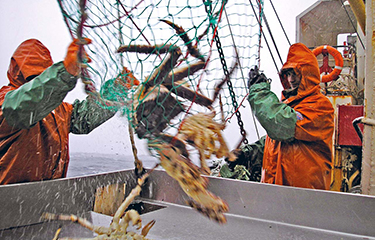Russian crabbers increasingly targeting Middle Eastern, Asian markets

Russian crab fishing companies are increasingly targeting the markets of the Middle East and Eastern Asia to compensate for being blocked out of the U.S. and European Union after they levied sanctions after Russia’s invasion of Ukraine.
Crab is one of Russia’s most-valuable seafood exports. Accounting for less than 5 percent of Russia's seafood exports by volume, crab brought in nearly 43 percent of Russia’s seafood export value in 2021, according to Agroexport, the state-run center of agricultural exports.
Russia annually catches around 95,000 metric tons (MT) of crab, and 75 to 80 percent of that harvest is exported, as domestic demand for crab is modest.
Russia's top crab markets in 2021 were South Korea, followed by the Netherlands, China, Japan, and Norway. Live and chilled crab from Russia were primarily sent to Asian countries, while frozen went to the U.S. and E.U.
But after an initial shock, Russia's crab exporters appear to have gotten back on track. Companies quickly retargeted sales to new markets, while also trying to sell more crab to tried-and-true markets in Asia.
Antey, a top crab company operating in the Northern Basin, caught 14,000 MT of crab in 2021, but shifted most of its sales to Asia. It has built out a sophisticated logistics scheme to get live crab –the preferred format in Asia – from Russia's remote northern seas to China and South Korea.
Russian Crab Deputy CEO Yulia Yurova, in an online column, said that the last year has shown a shift to Eastern markets is “a solvable task.” She pointed to statistics from the Russian Customs Service to highlight her point: From January through October 2022, China imported 2,565 MT of Russian crab, more than double the amount imported for the entire year of 2020 and 2021. Russia's crab exports to Japan increased as well, rising 31 percent year-on-year to 1,300 MT through August 2022.
China is a fast-growing market, and rising living standards there could drive demand for Russian crab even further, Yurova said. Russian Crab has launched a ...
Photo courtesy of Antey Group





Share